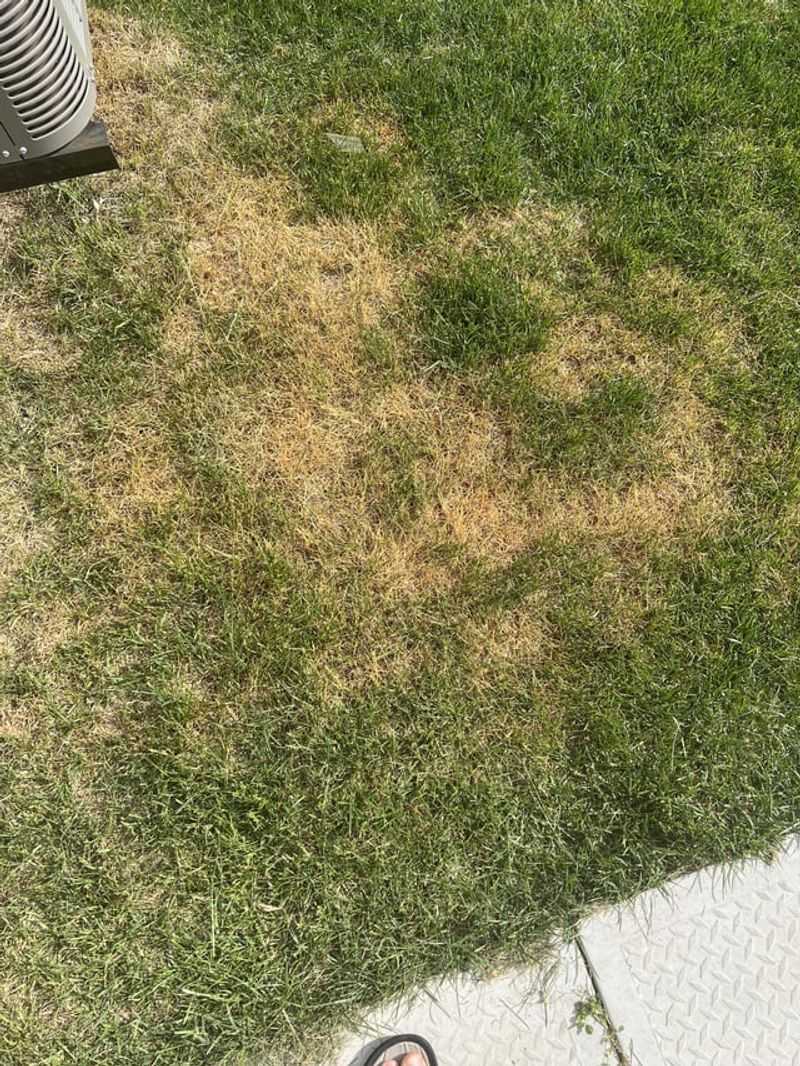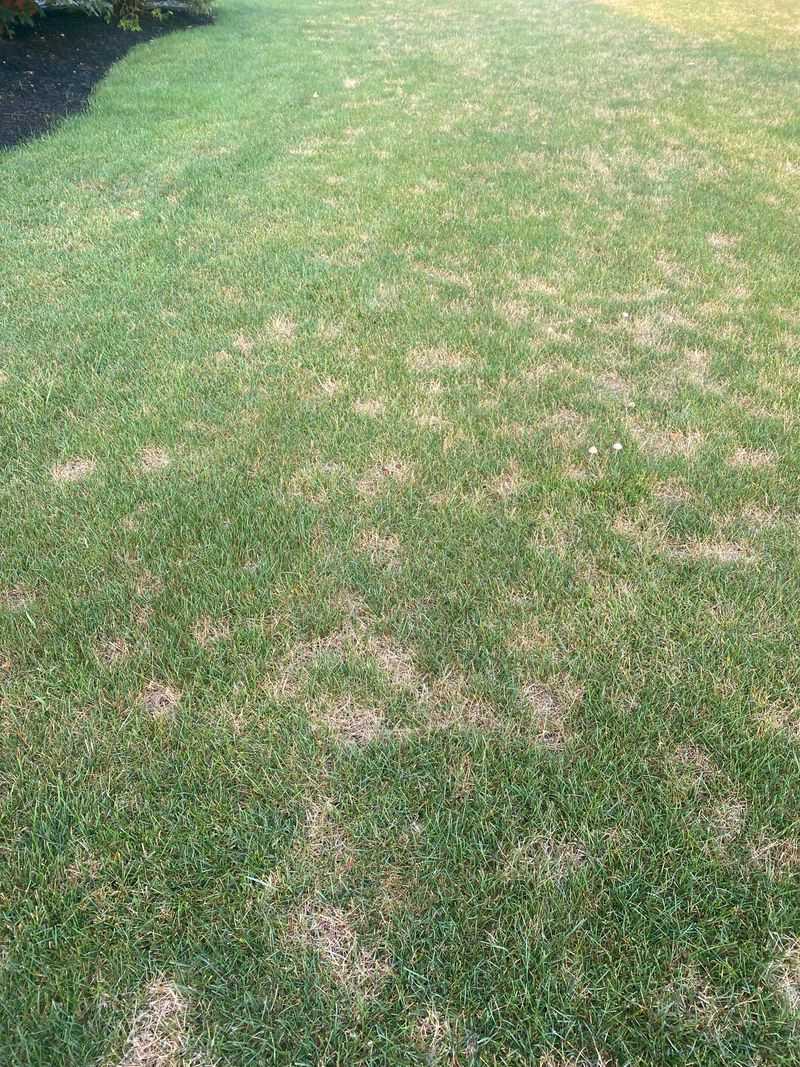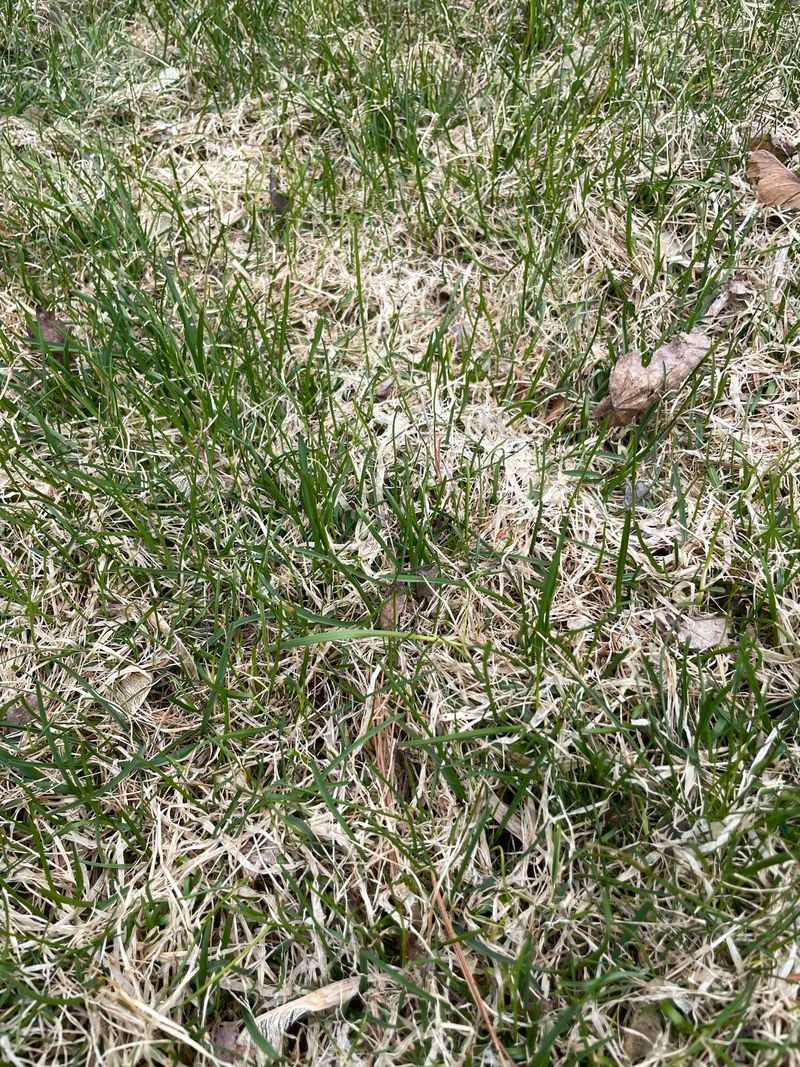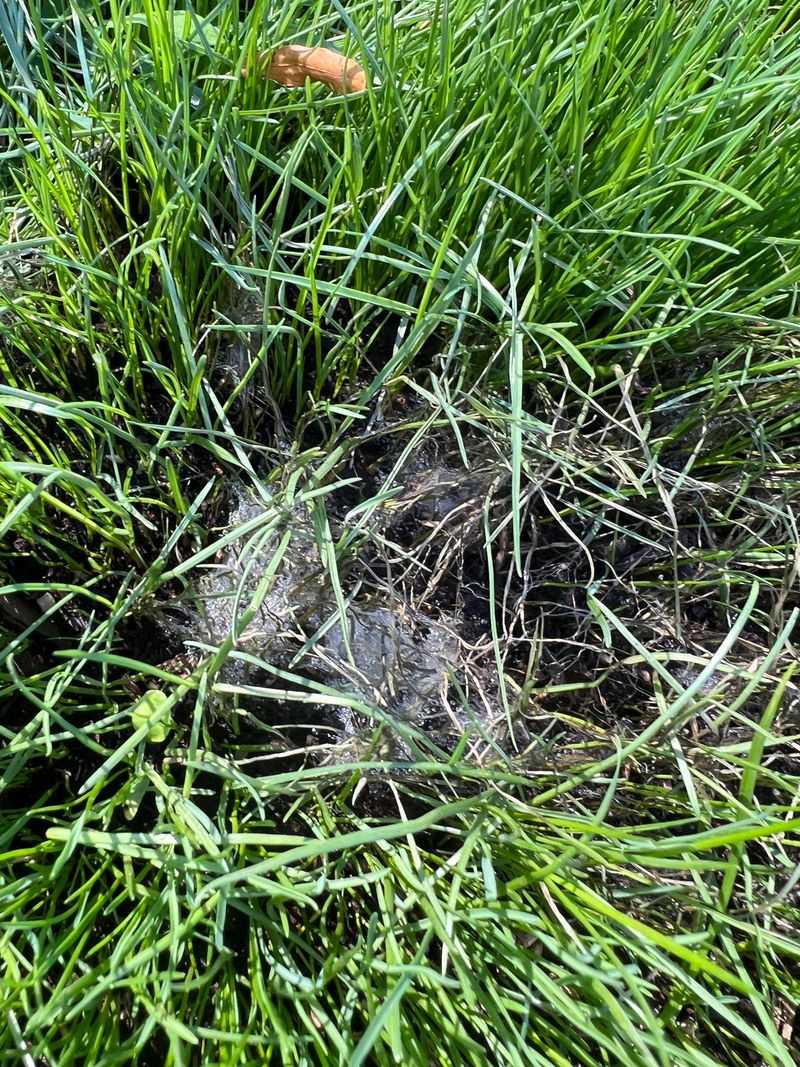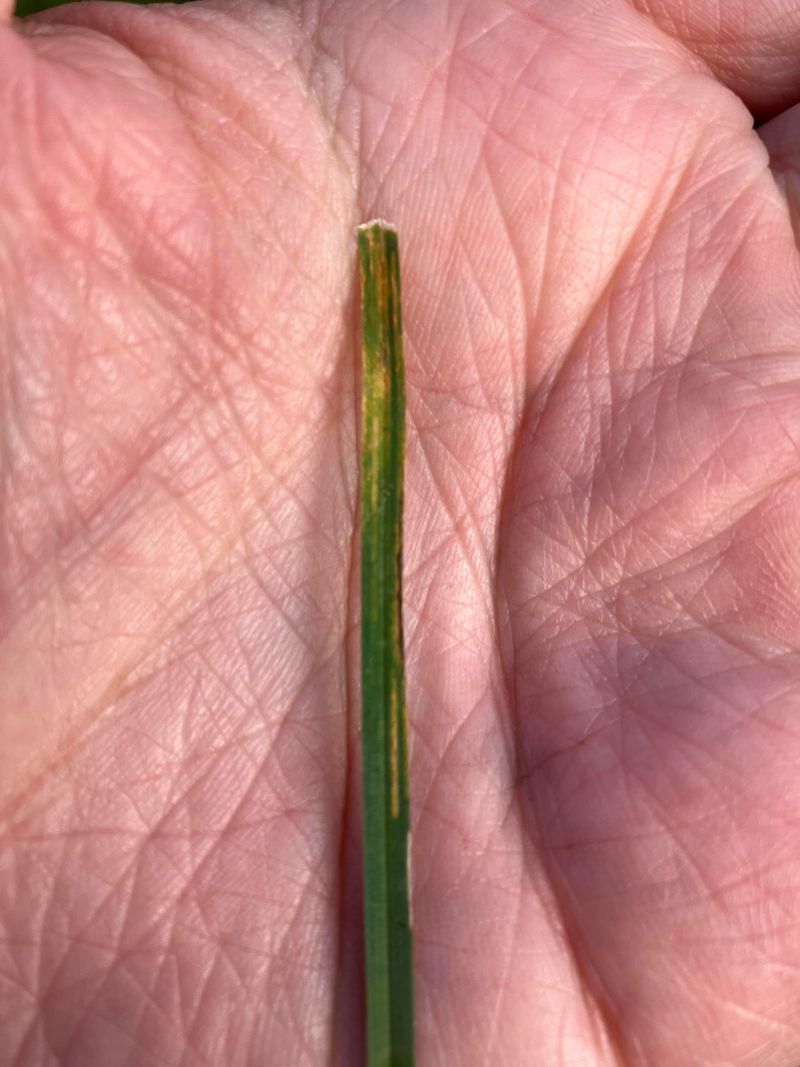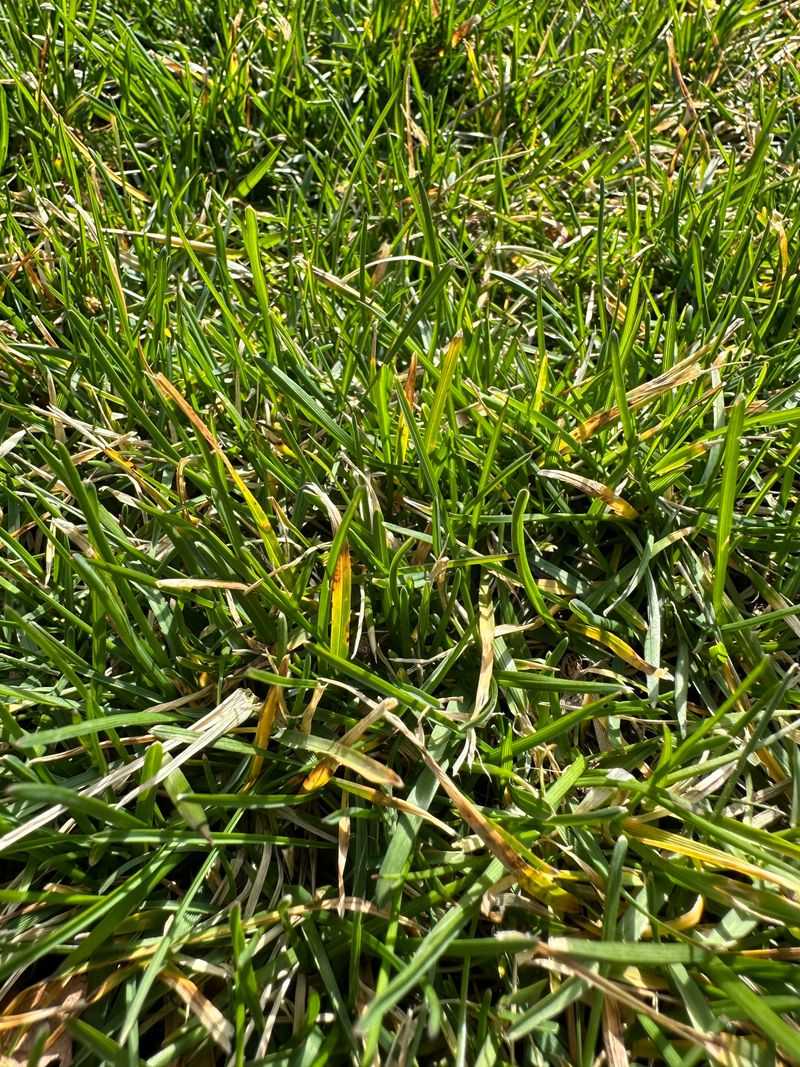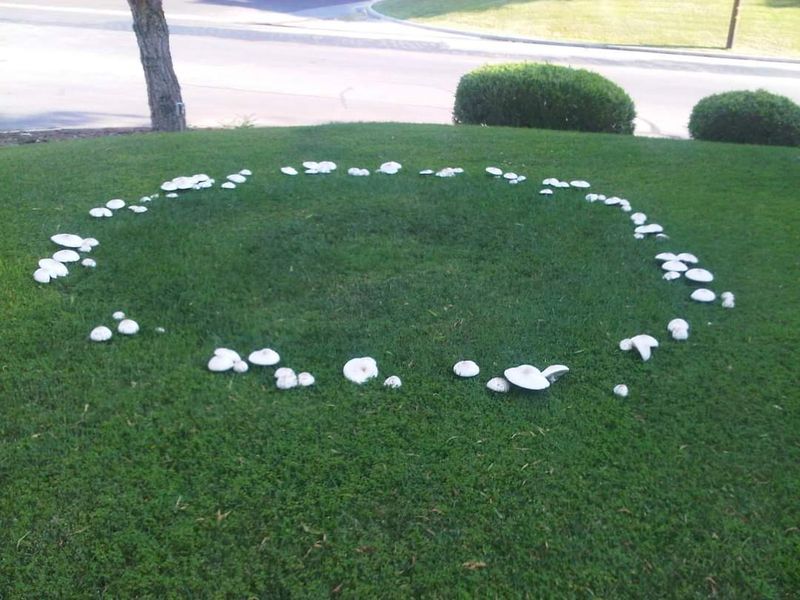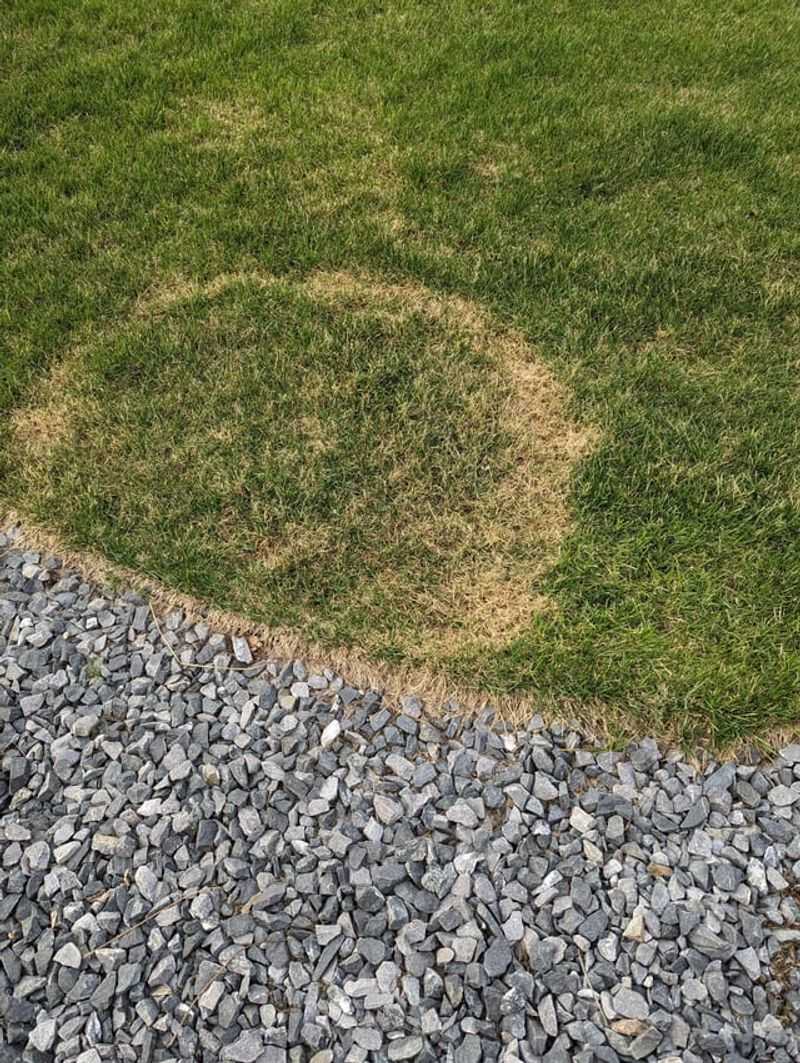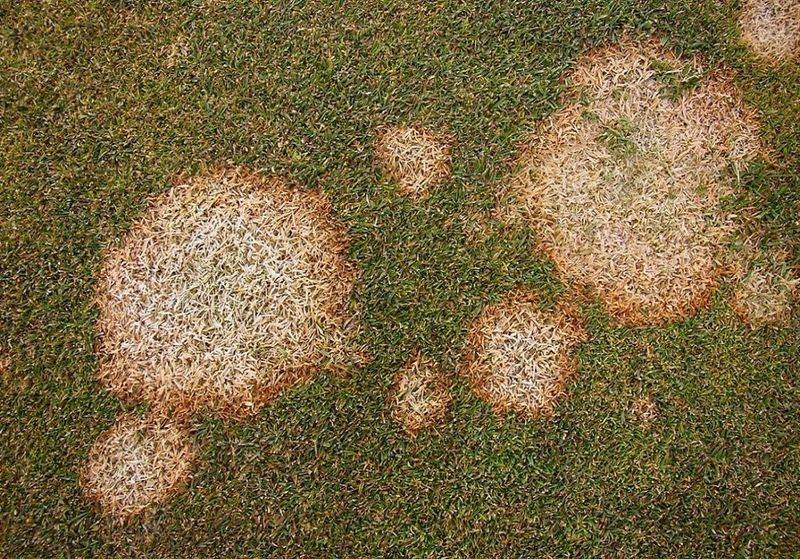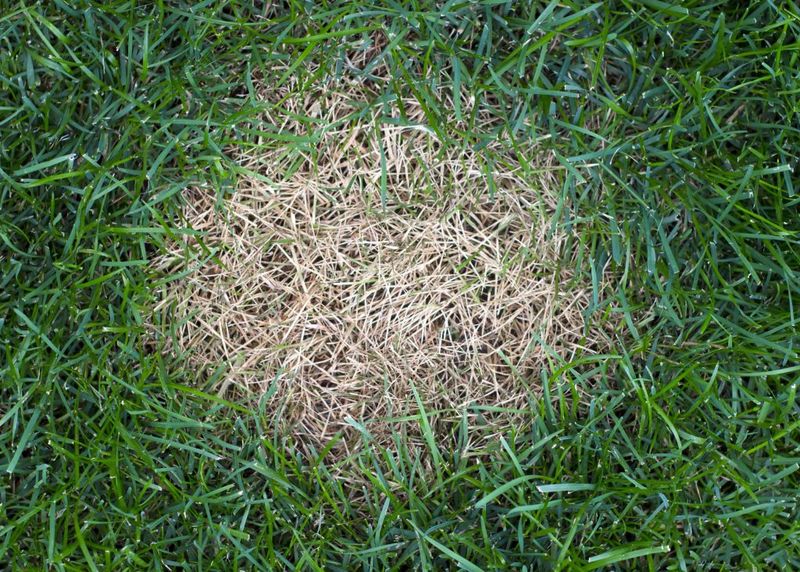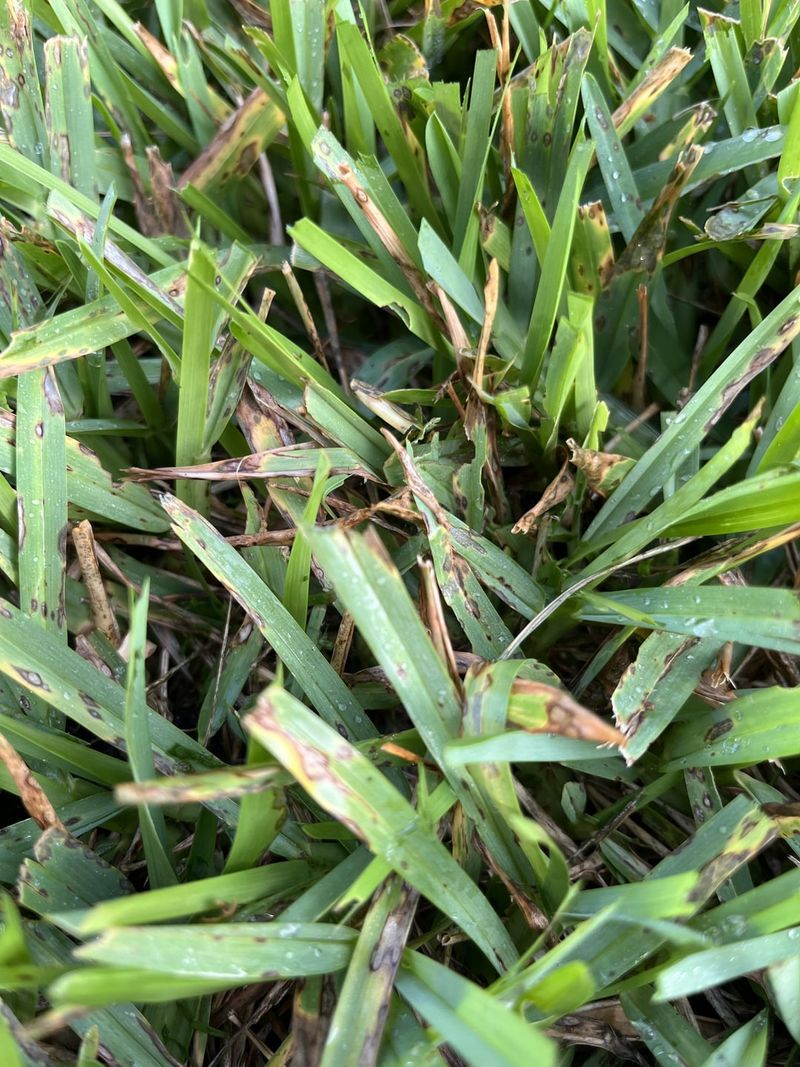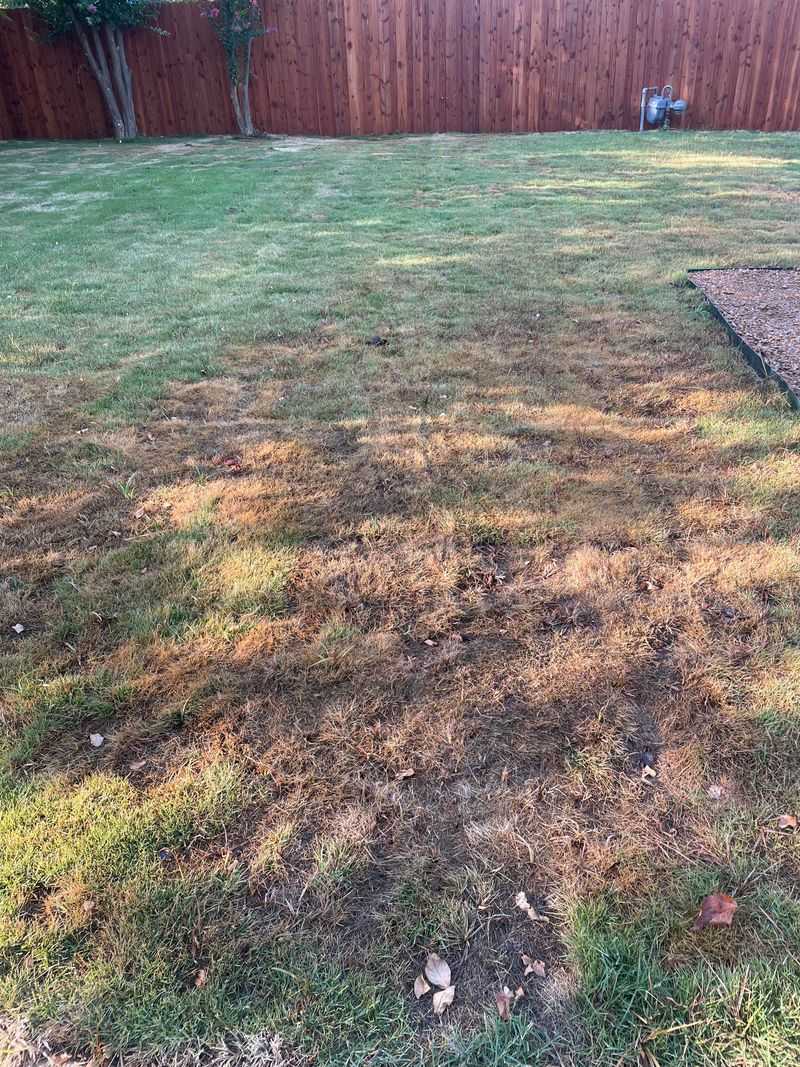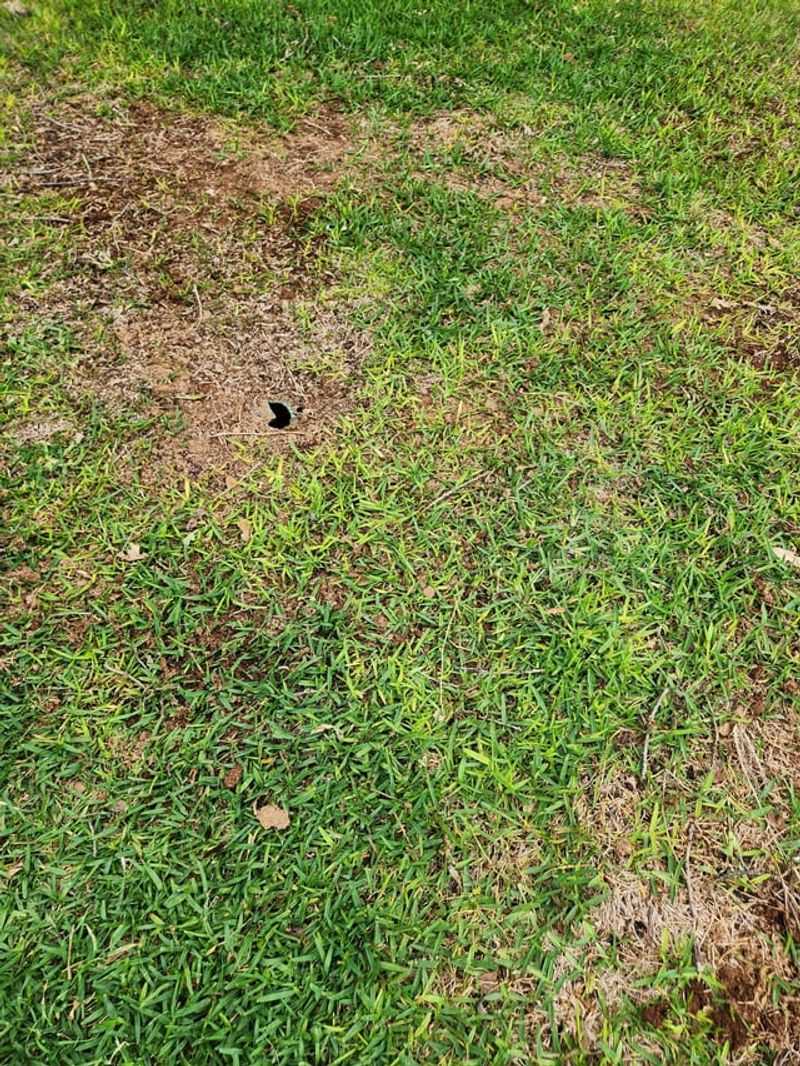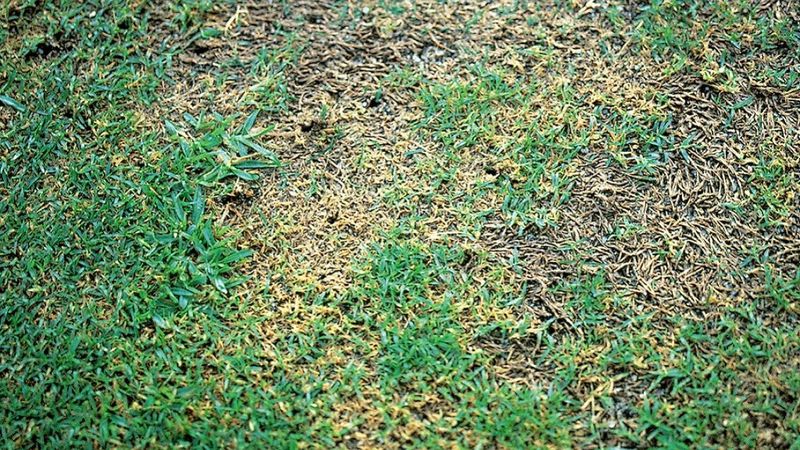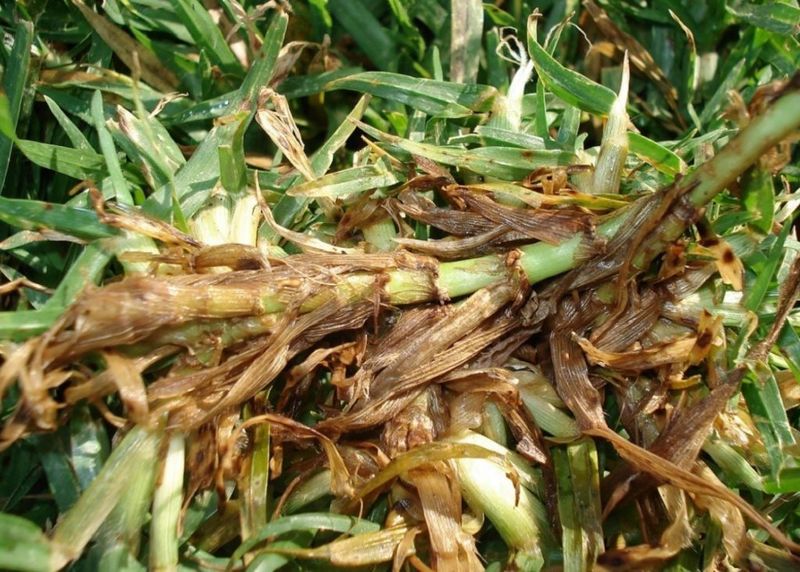If you’ve ever taken pride in your lawn, you know there’s nothing better than that smooth, green carpet under your feet. But just when everything looks perfect, trouble can sneak in—fast.
Lawn diseases have a way of showing up out of nowhere and spreading like wildfire, turning all your hard work into patchy chaos. I’ve seen it happen more times than I’d like to admit.
That’s why I’ve put together this list of 25 common lawn diseases, along with simple, effective ways to catch and stop them before they take over. Let’s protect that lawn you’ve worked so hard to grow.
1. Brown Patch
Imagine waking up to your cozy lawn only to see unsightly brown rings spread like crop circles after a mysterious night. Brown Patch is notorious for appearing during warm, humid nights. Each patch looks like it’s been painted by a mischievous elf.
The solution? Improve drainage and avoid those late-night watering sessions, as they make the conditions just right for this disease. Consider using a fungicide that’s specifically formulated for Brown Patch.
It’s like giving your lawn a protective shield against this sneaky invader. Consistency is key to keeping these circles at bay!
2. Dollar Spot
You might not find treasure beneath these spots, but Dollar Spot could make you wish for it! Unlike its name suggests, it’s no jackpot. This ailment leaves small, sunken patches resembling silver dollars—hence the name.
These spots appear in the morning, covered in dew. The trick here is to keep your lawn well-fed and avoid cutting it too short. A balanced nitrogen fertilizer can work wonders for prevention.
The next time you notice these splotches, know that a little TLC with the right nutrients can save your lawn from looking like a scattered coin collection.
3. Snow Mold
Ah, the aftermath of winter! Just when you’re ready for spring, Snow Mold makes an entrance, leaving cotton-like patches across your lawn. These molds can be gray or pinkish, and they thrive under the melting snow.
To prevent this, resist the urge to fertilize late in the fall. Instead, rake up fallen leaves and keep your lawn trimmed before the snow arrives. Proper preparation ensures you won’t be welcoming spring with these fuzzy invaders.
Embrace the change of seasons with a lawn free from this wintery woe, ready for sunny days ahead.
4. Red Thread
With a name like Red Thread, it sounds like it could be the start of a cozy sweater. Instead, this disease weaves its way through your lawn, leaving behind red, threadlike strands.
It’s often a problem in nutrient-depleted soils. Ensure your grass has adequate nitrogen to fend off this colorful but damaging disease. A well-fed lawn not only looks great but is less susceptible to Red Thread.
Think of it like feeding your lawn a nutritious meal—less red, more green! Keep your yard healthy with the right balance of nutrients.
5. Pythium Blight
Picture this: you step out to enjoy your lawn and find greasy, blackened patches instead. Meet Pythium Blight, a fast-spreading disease that loves wet, poorly drained areas.
It’s like the unwanted guest at your lawn party. The best defense is excellent drainage and avoiding watering at night. If things get out of hand, a targeted fungicide can help restore your lawn’s glory.
Think of it as sending in the cavalry to save the day! With a little attention, you can prevent this blight from turning your grassy haven into a battlefield.
6. Rust Disease
Rust Disease isn’t just for old cars; it can plague your lawn, too! The grass blades get coated with orange, rusty powder, giving the lawn a weathered look. This disease thrives in shaded, damp areas, so keep your lawn well-lit and aerated.
Regular mowing with sharp blades helps remove infected grass before it spreads further. A light nitrogen application can also boost your lawn’s resilience.
Rust may add character to antiques, but in your garden, it’s best nipped in the bud. Keep things bright and breezy to keep this rusty nuisance away!
7. Leaf Spot
Leaf Spot might sound like a pretty motif, but it’s more like an unwanted tattoo on your lawn. This disease is known for the dark spots it leaves on grass blades, particularly after cool, wet weather.
Thankfully, it’s something you can manage with proper care. Aerating your lawn enhances air circulation, drying out those pesky spots. Avoid excessive nitrogen fertilizers which can promote disease.
It’s like giving your lawn a spa day: fresh air and a balanced diet! With regular care, you can ensure your grass remains spot-free and camera-ready.
8. Fairy Ring
These might sound magical, but they’re not the enchanting circles you might hope for. These rings appear as dark green circles and sometimes sprout mushrooms, giving lawns an unkempt, fairy-tale appearance.
A common cause is decaying organic matter beneath the soil, so regular aeration is crucial. It’s like giving your lawn a breath of fresh air! For those stubborn cases, removing soil and replacing it with fresh material can help.
While whimsical in name, these rings are better suited to storybooks than your backyard.
9. Powdery Mildew
Powdery Mildew might remind you of a dusting of powdered sugar, but your lawn isn’t a dessert! This disease often affects grass in shaded areas, leaving a white, powdery coating on the blades.
The key is to prune trees or shrubs, increasing sunlight and airflow to the area. It’s like opening a window to let the fresh air in! Ensuring your lawn is well-fed and healthy will also deter mildew.
While it might look sweet from a distance, this powdery presence is best kept off your lawn. Brighten up your yard with a little sunshine!
10. Summer Patch
Summer Patch is the lawn’s way of throwing a heatwave tantrum. When the sun blazes, this disease causes yellow, sunken patches that seem to pop up overnight. It’s like your lawn’s way of saying it’s had enough heat!
Enhance your lawn’s heat tolerance by ensuring proper watering and timely fertilization. Aeration helps too, giving the roots room to breathe.
Think of it as your lawn’s summer vacation to rejuvenate before the next heatwave. With a bit of care, you can keep your grass beautiful even when the temperature rises.
11. Necrotic Ring Spot
This might sound ominous, but it’s just a lawn’s way of showing stress. These ring-shaped patches have dead grass on the outer edge, with healthy centers. Poor soil drainage and overwatering are often culprits.
Improving aeration and reducing watering can work wonders. It’s like taking your lawn to a stress retreat! Using a balanced fertilizer helps, too. These rings, while dramatic, are no match for consistent lawn care.
With the right approach, you can keep your lawn looking its best, even when it’s feeling under pressure.
12. Fusarium Patch
Fusarium Patch, also known as Pink Snow Mold, doesn’t need snow to strike. It leaves small, circular patches of dead grass, often in cool, wet conditions. Think of it as your lawn’s way of sulking in the rain.
Ensuring good drainage and avoiding excessive nitrogen are key to prevention. A fungicide can help if things get tough. Consider it a little TLC for your grass, keeping it healthy and resilient.
With the proper care, you can prevent these patches from turning your lawn into a patchwork quilt.
13. Anthracnose
Anthracnose might sound like a fancy disease, but it’s just another villain in your lawn’s story. It causes dark, sunken lesions on grass blades, mostly in shaded, damp areas. Improving sunlight exposure and aeration can reduce its impact.
It’s like rolling out the red carpet for sunshine and fresh air! Regular mowing and balanced fertilization also help keep your grass robust.
While the name might sound serious, with a little extra care, you can keep Anthracnose at bay and your lawn looking its best.
14. Gray Leaf Spot
Gray Leaf Spot doesn’t play favorites—it can affect a variety of grass types, leaving gray, oval spots on the blades. It’s the lawn equivalent of a bad rash. The solution? Improve air circulation and avoid high nitrogen fertilizers during hot, humid months.
Think of it as putting your lawn on a special diet! A fungicide can help if needed, but prevention is always better.
Regular care can keep this spotty nuisance from turning your lawn into a polka-dotted mess. Keep things breezy and balanced for a healthy yard.
15. Zoysia Patch
Zoysia Patch affects, you guessed it, Zoysia grass, leaving large, circular patches of dead grass. It’s like your lawn’s way of saying it needs a little extra love. Good drainage and aeration are crucial to prevention.
Consider it like giving your lawn a deep breath of fresh air! Avoid heavy nitrogen in the fall and provide adequate spring nutrients.
With the right care, you can keep these patches from taking over. Treat your Zoysia grass right, and it’ll reward you with a patch-free carpet.
16. Slime Mold
This might look like an alien invasion, but it’s harmless and temporary. It coats grass blades with a slimy, grayish film, resembling spilled paint. It’s more of a curiosity than a threat.
Simply mowing or brushing it off can remove the unsightly layer. It’s like wiping away an accidental spill at a dinner party! Ensuring your lawn has good airflow helps prevent its return.
While it might cause a double-take, this mold is just a passing visitor. A little housekeeping is all it takes to keep your lawn clear.
17. Take-All Root Rot
Take-All Root Rot sounds like a villain, and it can be! This disease attacks the roots, leaving grass wilted and yellowing. It’s like the flu for your lawn. Good soil pH and proper fertilization can help keep it at bay.
Consider it like a multivitamin for your garden! Avoid overwatering and maintain good drainage to prevent this rot from spreading.
While it might seem daunting, with consistent care, your lawn can bounce back from this sneaky adversary. Keep your soil healthy, and your grass will thrive.
18. Bermudagrass Decline
Bermudagrass Decline doesn’t mean your lawn’s giving up—it’s just asking for help. This disease causes thinning patches, leaving the lawn sparse. Improved drainage and reduced soil compaction can revive it.
It’s like giving your grass a spa day! Regular overseeding and balanced fertilization also play a part in recovery. Don’t let the decline discourage you; with the right care, your lawn will come back stronger.
It’s all about giving your Bermudagrass the attention it deserves to bounce back to its former glory.
19. Helminthosporium Leaf Spot
Just another challenge for your lawn. This disease causes small, dark lesions on grass blades. It’s often a result of stress from compacted soil or poor nutrition.
Aerate your lawn and ensure proper fertilization to prevent it. Think of it as a health check-up for your grass! Regular care can keep Helminthosporium at bay, ensuring your lawn remains pretty and lesion-free.
With a little TLC, your lawn can look like a green paradise.
20. Stripe Smut
Stripe Smut sounds like a fashion trend, but it’s not one you want on your lawn. This disease leaves long, black streaks on grass blades, giving a striped appearance. It’s often seen in cool, moist conditions.
Regular mowing and avoiding excessive moisture can help prevent it. It’s like giving your lawn a new wardrobe! Ensure good air circulation and balanced fertilization for best results.
While the stripes add an interesting look, your lawn will be happier without them. Maintain a healthy lawn with these simple steps.


